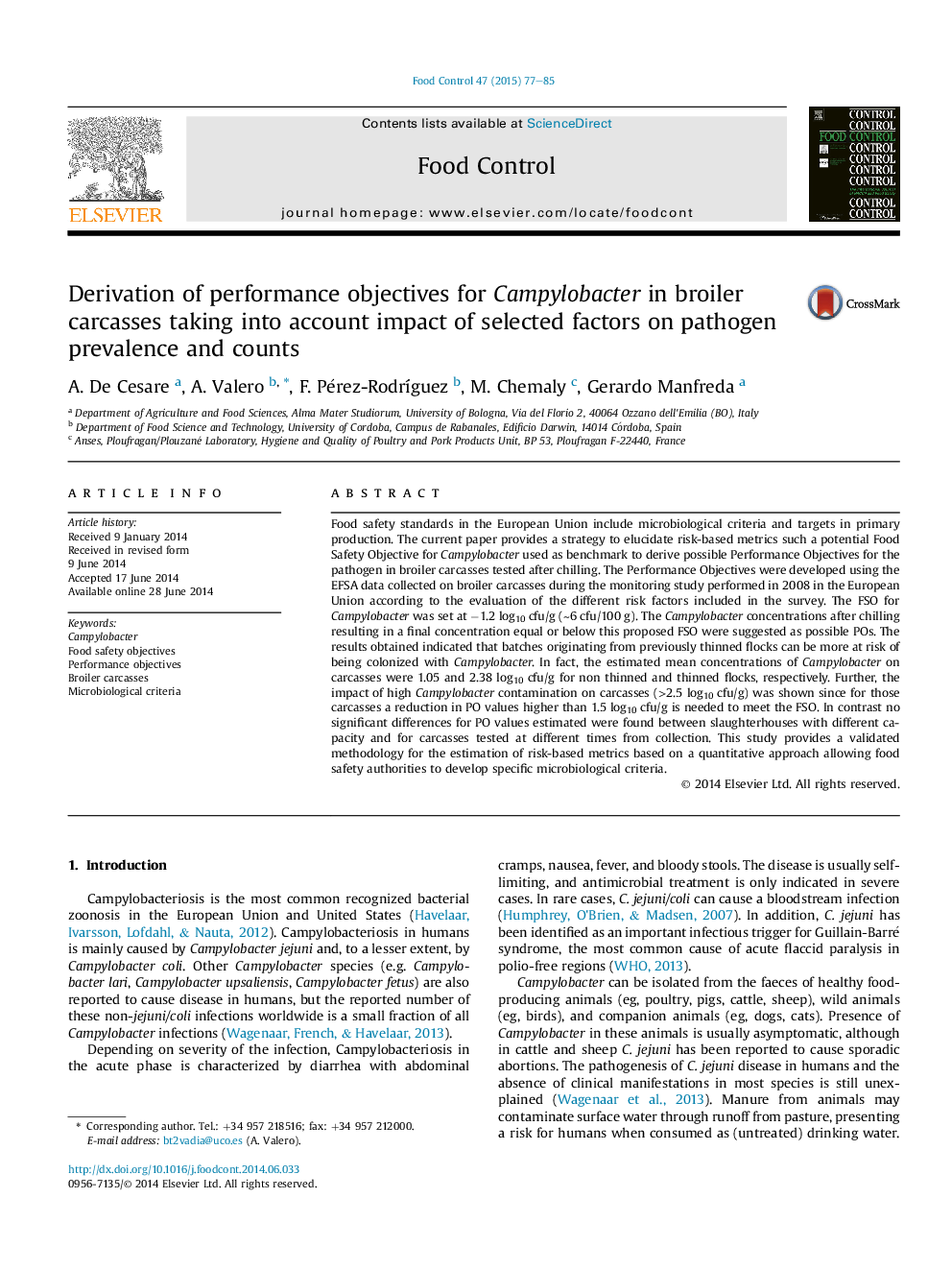| کد مقاله | کد نشریه | سال انتشار | مقاله انگلیسی | نسخه تمام متن |
|---|---|---|---|---|
| 6391324 | 1628415 | 2015 | 9 صفحه PDF | دانلود رایگان |
- The paper provides a strategy to elucidate a potential FSO to derive possible POs.
- The FSO for Campylobacter was set at â1.2 log10 cfu/g.
- The Campylobacter concentrations after chilling were suggested as possible POs.
- The estimated mean Campylobacter levels were 1.05 and 2.38Â log10Â cfu/g for non thinned and thinned flocks.
Food safety standards in the European Union include microbiological criteria and targets in primary production. The current paper provides a strategy to elucidate risk-based metrics such a potential Food Safety Objective for Campylobacter used as benchmark to derive possible Performance Objectives for the pathogen in broiler carcasses tested after chilling. The Performance Objectives were developed using the EFSA data collected on broiler carcasses during the monitoring study performed in 2008 in the European Union according to the evaluation of the different risk factors included in the survey. The FSO for Campylobacter was set at â1.2 log10 cfu/g (â¼6 cfu/100 g). The Campylobacter concentrations after chilling resulting in a final concentration equal or below this proposed FSO were suggested as possible POs. The results obtained indicated that batches originating from previously thinned flocks can be more at risk of being colonized with Campylobacter. In fact, the estimated mean concentrations of Campylobacter on carcasses were 1.05 and 2.38 log10 cfu/g for non thinned and thinned flocks, respectively. Further, the impact of high Campylobacter contamination on carcasses (>2.5 log10 cfu/g) was shown since for those carcasses a reduction in PO values higher than 1.5 log10 cfu/g is needed to meet the FSO. In contrast no significant differences for PO values estimated were found between slaughterhouses with different capacity and for carcasses tested at different times from collection. This study provides a validated methodology for the estimation of risk-based metrics based on a quantitative approach allowing food safety authorities to develop specific microbiological criteria.
Journal: Food Control - Volume 47, January 2015, Pages 77-85
